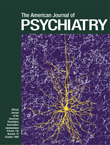Two of the country’s leading anxiety disorder mavens have collaborated to create this tour de force. Before heaping praise on the contents, I must mention an area of noncontent. Despite their statement in the preface that “all the disorders found in the most recent DSM-IV and ICD-10 classification” are included, obsessive-compulsive disorder (OCD) is nowhere to be found. Perhaps the authors are among those who feel that OCD is really not an anxiety disorder. Regardless of the reason, if you want to read about OCD, don’t buy this book. But if you want to learn an awful lot about all the other anxiety disorders, the book would be a very wise investment.
The first chapter, “Normal Anxiety and Fear: Psychological and Biological Aspects,” lays a firm foundation for the chapters on the disorders that follow. The authors cast a comprehensive net over all aspects of the psychological and biological bases of anxiety and competently examine the knowns, unknowns, and maybes with honesty and fair balance (and the chapter is referenced into 1997). Those intrigued by that structural mouthful, the nucleus paragigantocellularis, will be pleased to know that it plays a central role in the psychobiology of arousal/anxiety. The chapter concludes with the acknowledgment that although a little anxiety may be a wonderful thing, too much “causes dysfunctions that need correction through psychological and pharmacological interventions.”
The chapters that follow address generalized anxiety disorder, panic disorder and agoraphobia, social phobia, specific phobia, posttraumatic stress disorder, and anxiety in the medically ill. The format is more or less the same and is indicative of the thoroughness of the authors—definition, diagnostic criteria, reliability and validity, measurement, epidemiology, etiology and pathogenesis, clinical picture, natural history, complications, differential diagnosis, and treatment.
The authors do not shy away from controversy; rather, they tackle it with a sense of due diligence. It is refreshing to see them confront the sometimes elusive entity of generalized anxiety disorder by referring to it as a “newly described disorder about which much uncertainty exists.” They proceed to wring as much uncertainty out of it as is scientifically possible and by doing so should leave readers feeling that they know as much about the disorder as anyone.
The chapter on panic disorder and agoraphobia is absolutely thorough (and supported by almost 21 pages of references). The chapter on social phobia, on the other hand, lags a bit in the treatment section, with monoamine oxidase inhibitors referenced into 1992, anxiolytics into 1993, and selective serotonin reuptake inhibitors into 1994. This condition is the currently fashionable anxiety disorder, and the recent explosion of journal publications has outpaced anyone’s ability to provide timely references in a book chapter.
Even specific phobia, the often overlooked, “lesser” anxiety disorder, receives appropriate consideration. The etiology and pathogenesis section is particularly interesting because biological factors (regional blood flow, physiological reactivity, neuroendocrine variability, and neurotransmitters) are integrated with psychological factors (aversive conditioning, vicarious learning, and Freud).
The book concludes with chapters on posttraumatic stress disorder (PTSD) and anxiety in the medically ill. The authors quite appropriately acknowledge that the conceptualization of PTSD “is still in flux,” but, at the same time, they are able to discuss the condition with great clarity. Anxiety in the medically ill is a complicated issue. Although much of it is transient and would never meet diagnostic criteria for a disorder, some represents the comorbidity of anxiety disorders with medical illness, and some represents disorders induced by a medical condition or a substance. The relatively brief chapter is a good introduction to a topic that deserves more extensive consideration.
All in all, the authors have done a masterful job in presenting a comprehensive and timely overview of the anxiety disorders (OCD excluded). The book is well worth reading.

